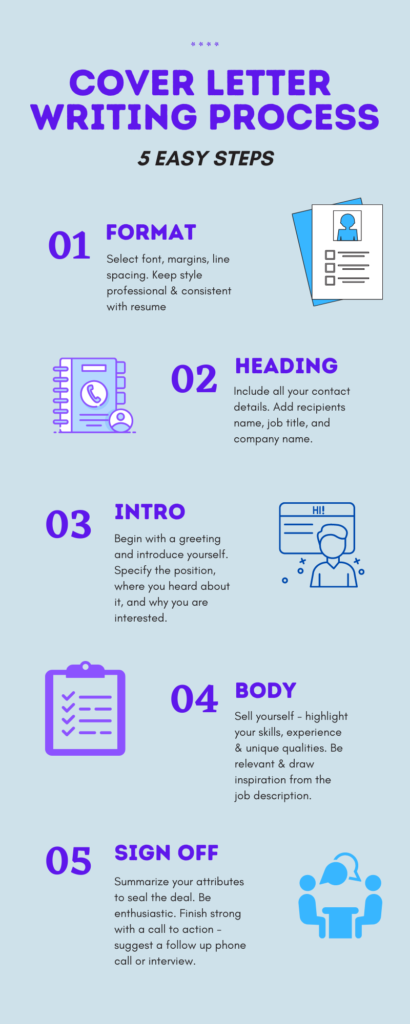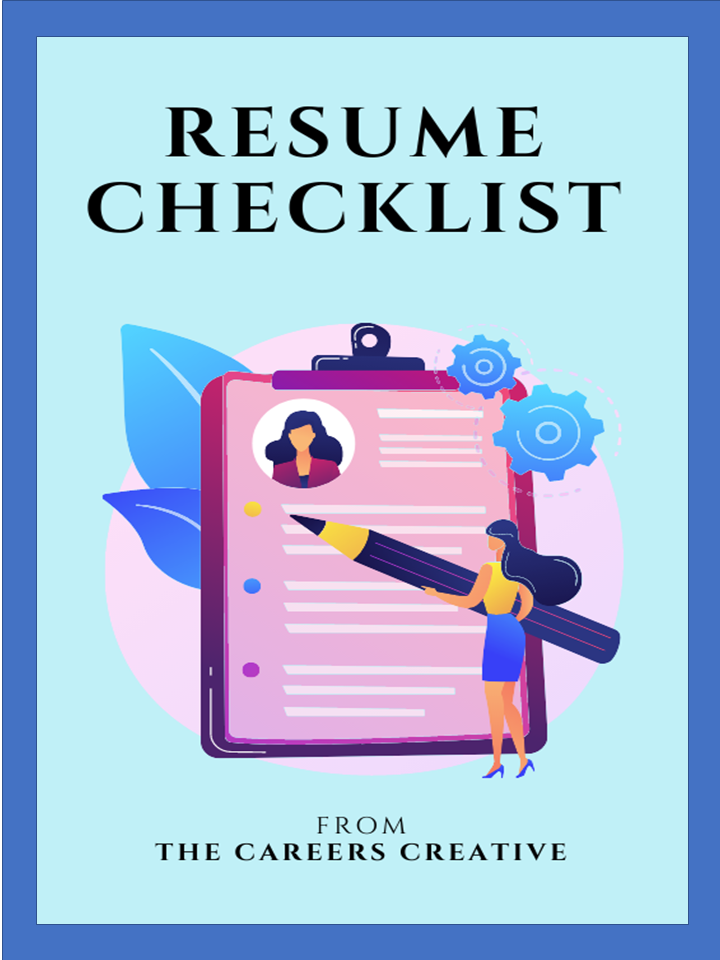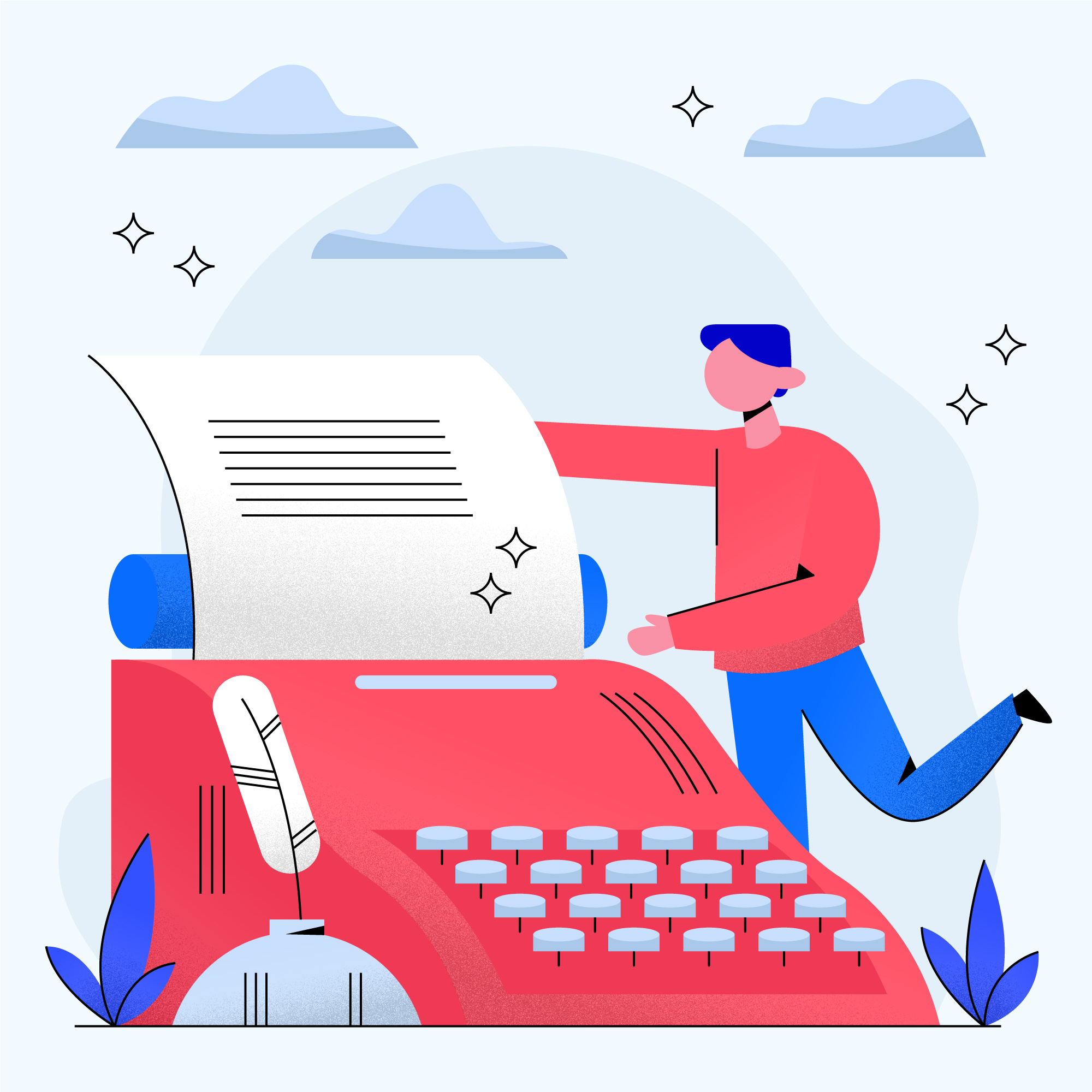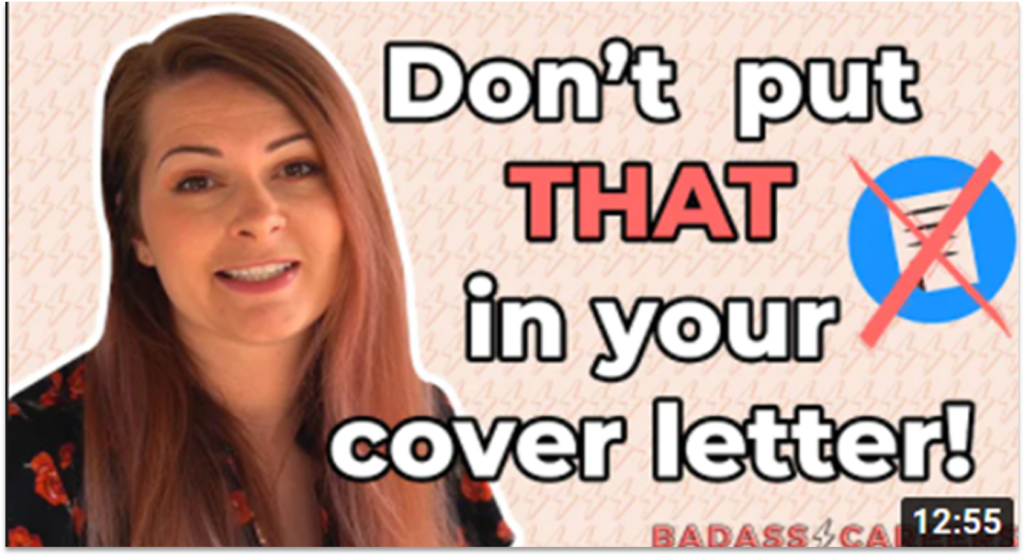What Is a Cover Letter?
A cover letter is an important and often underrated part of the job application process.
This customized letter is sent to a potential employer, along with a resume, as part of a job application.
The cover letter performs a number of distinct functions. It provides the applicant with an opportunity to:
- Introduce themselves
- Highlight personal skills, experience, qualifications relevant to the job
- Expand on aspects of the resume
- Express enthusiasm and suitability for the role
- Reveal their personality
- Display professionalism and writing abilities.
Ultimately, the purpose of the cover letter, along with the resume, is to help the applicant secure an interview.
HOW TO WRITE A COVER LETTER: A COMPLETE TEACHING RESOURCE




CHECK IT OUT BELOW!
This resource takes the form of a Google Slides™ presentation with writable slides and a printable booklet of worksheets in PDF format for your students. As you work through the slides together, students can put their learning into practice immediately.
This is no cursory, surface overview of how to write a cover letter. It’s a deep dive into the genre. Stuffed with worksheets, graphic organizers, writing templates, supporting video links, and discussion activities, this classroom/remote learning-ready resource contains everything you need to teach students how to write a compelling cover letter – with NO PREP required.
This resource covers:
What Is the Purpose of a Cover Letter
In our competitive world, employers routinely review dozens of cover letters for each vacant position, so it’s important to ensure they are concise and informative. This is best achieved by following a clear format that enables the applicant to hit all the points they need to while keeping things lean.
While the most common purpose of the cover letter is as part of a job application, there are some other contexts where cover letters are used.
For example, variations of the cover letter include:
- The Letter of Inquiry (for possible job vacancies)
- The Course Application (for universities, colleges, etc.)
- The Loan Application (for mortgages, car loans, etc.)
The format and many of the features described below can easily be adapted to suit these different functions.
Cover Letter Design
Layout
Many free and paid cover letter templates are available. As well as choosing from predesigned options, software such as Microsoft Word, Google Docs, and LibreOffice allow you to design your own creations.
It’s best to keep things simple and avoid choosing something over-fussy with too many graphical elements and busy color schemes that overwhelm the reader and distract from the content.
It is good practice to select a layout that complements the structure of your resume.
Length
Cover letters are brief. Usually, a single page of between three and five paragraphs is enough.
Fonts
- Choose a font that is easy to read.
- Stick with it throughout the entire letter – basic fonts such as Arial, Courier New, Calibri, Times New Roman, and Verdana work best.
- Avoid bold, italicized, and underlined text for the most part – except when emphasizing something quantifiable.
- Use an appropriate font size such as 10, 11, or 12 pt.
- Use black type.
The Format of a Cover Letter
We can break the art of how to write a cover letter down into seven main parts, each of which we’ll look at in turn in more detail. These are:
- The Header
- Date & Employer’s Address
- Salutation
- Introduction
- Body Paragraphs
- The Conclusion
- The Sign-off

1. The Header
The header, as the name suggests, is located at the very top of the cover letter. It typically contains:
- The applicant’s name
- The applicant’s contact details, e.g., telephone no. and email address.
The header may also contain:
- The applicant’s professional website address / digital portfolio – for digital cover letters. This may be in the form of a hyperlink.
- Linkedin profile address/hyperlink.
Traditionally, headers also contained the applicant’s physical address. In this most digital of ages, however, this is generally unnecessary as an email address is usually sufficient.
2. Date & Employer’s Address
Ir doesn’t come more straightforward than this. Again though, the employer’s address is part of the traditional cover letter layout – the kind that was folded carefully and placed in a stamped envelope to be sent by mail – you may forgo this if you are sending the cover letter by new-fangled email!
3. Salutation
The job applicant needs to open with a suitable salutation. Essentially, there are two distinct parts to consider in this section: the greeting and the title.
The Greeting
The general greeting that is used is Dear, and, typically, it is best to stick with convention here. ‘Dear’ is polite and formal and built for occasions such as this.
Never open with ‘hi,’ ‘hey,’ or similar – much too informal for 99.99% of situations. You want to land a job, not make a new surfing buddy!
The Title
This will depend on who it is you’re addressing and their position. If needs be, do a little research to uncover the correct person to address your cover letter to. Generally, you’ll use Mr. and Ms. plus the surname when known. Avoid using Mrs. and Miss. For example, Dear Ms. Ramirez, Dear Mr. Golightly.
Where you know the name of the addressee, but their gender is unknown, use both their first name and their surname. For example, Dear Dakota Havisham, Dear Ali Akram, etc.
If the person has a professional title such as Dr. or Prof., Rev., Sgt., etc., substitute Mr./Ms. For these.
No Contact Name
There may be times that you have no contact name even after a close examination of the job ad and researching online. In these cases, you can’t go too far wrong with Dear Hiring Manager.
Formalities out of the way, it is time to get stuck into the meat and potatoes of the cover letter, which we can divide into 3 identifiable sections:
- The Introduction
- The Body Paragraphs
- The Conclusion
WANT TO MAKE RESUME WRITING A WHOLE LOT EASIER FOR YOURSELF AND YOUR STUDENTS?

The Careers Creative Resume Writing Checklist provides criteria to help students with the formatting and features they need to include when creating their own resumes.
Our Resume Writing Checklist is a versatile tool that can be used as a writing guide, for self-assessments, or for peer assessments.
Grab Your FREE Copy of Our Resume Writing Checklist Below.
4. The Introduction
The purpose of a cover letter’s introductory paragraph is to grab the reader’s attention.
Typically, an employer will receive scores of applications for each job vacancy, so don’t waste the first sentence with worn-out openers such as “I am writing to enquire about your recently advertised position…” If you do, you may well find your precious cover letter unceremoniously tossed into a wastepaper basket.
Your main goal should be to grab the reader’s attention right from the get-go. If you manage to open with enthusiasm and creativity while maintaining a respectful tone, you’ll have gone a long way to achieving your goal.
Of course, we shouldn’t be afraid to express our personalities in our cover letters. Most of us want to find a working environment that will be suited to who we are. Therefore, we shouldn’t be afraid to express ourselves, however, the primary focus of the introductory paragraph should be to:
- State the purpose for writing
- Express enthusiasm
- Show awareness
- Make a connection
State Your Purpose & Express Your Enthusiasm
Space is at a premium in a cover letter. Not because of a paper shortage, but because we are fighting a hiring manager’s limited attention and patience.
To that end then, we can usefully combine stating our purpose with expressing our enthusiasm. For example, we could try something like:
- I was delighted to see a vacancy announced in…
- I would be thrilled to be considered for the position of…
- I am excited to apply for the role of…
Enthusiasm is infectious and, in this context, we may well find it mirrored back to us. By displaying the enthusiasm you feel, you’ll be indicating how motivated you are to do the job.
Show Awareness
Just as we like it when someone remembers our name, potential employers are pleased when a job applicant displays an awareness of who their company is and what they do. If you aren’t aware, a few minutes on the Internet should clue you in to what they do.
This isn’t pure flattery, by the way. Again it shows you are motivated and enthusiastic and employers appreciate it when you show an understanding of what the job you are applying for entails.
Make a Connection
If you already know someone working at the company, you might want to mention them. You will need to make a decision on whether or not this is appropriate based on your own specific circumstances.
Utilized judiciously, this strategy can work as a kind of referral but, if you do opt for this approach, be sure to get the individual’s permission first and make sure that you are on good terms!
Example:
“I was excited to learn of this opportunity from my former colleague Veronica Mali who works in your sales department. Veronica and I worked together as Camp Counsellors, and she thought I might be a good match for this opening.”
5. Body Paragraphs
The body paragraphs of the cover letter should focus on matching the applicant’s skills, experience, and qualifications to the job requirements.
As you want the hiring manager to be able to absorb the information quickly, paragraphs should be kept short and bullet points can be used where required.
The body of your cover letter shouldn’t be a mere rehash of the resume. The purpose here is to highlight and draw out particular aspects of the applicant’s suitability for this particular role. The cover letter helps the applicant tailor their resume to the particular demands of the job applied, it does not merely repeat the same content.
Here are a few helpful hints to bear in mind while writing your body paragraphs.
- Be concise and to the point – think two paragraphs of around 4 sentences.
- You can also use bullet points to improve readability.
- Make a connection between your skills, experience, and qualifications
Don’t worry if you lack formal experience or qualifications, instead focus on volunteer work, work experience, and life skills, as well as emphasize your ability to learn quickly.
To do this, return to the job advert and make a note of any specific requirements mentioned. You can supplement these with a little online research. Just type in the job title and the phrase ‘job description.’
Now make a corresponding list of your own skills, qualifications, experience, etc, and see how you can match these to the job requirements. You may have to do a little bit of reflection to make the connections, so don’t be disheartened if these connections aren’t immediately obvious.
If you cannot verify knowledge of the ‘hard’/technical skills required for the post, focus instead on the soft skills that you do have – think transferable skills such as critical thinking, problem-solving abilities, adaptability, etc. These types of skills are almost universally useful. Hard skills are much more specific to particular jobs and can be learned.
Example:
While working as a camp counselor last summer, and on short notice, I was given the responsibility of decorating the stage for the end-of-season show. Leading a team of 7 other counselors, we decorated the stage in time and under budget. Many parents complimented the stage decoration afterward.
As with the cover letter in general, in your conclusion, try to keep the focus on the company and their needs, rather than your own.
Thank the reader for their time and express how excited you would be for an opportunity to discuss their needs in an interview.
Example:
As I thrive on developing meaningful working relationships with clients and surpassing their expectations, it has long been a driving career goal for me to work with Dunder Mifflin.
Thank you for taking the time to consider my application. I would be delighted to have the opportunity to discuss my suitability for this position further if you think I am a good fit for what you are looking for.
Yours sincerely,
Thom Humber
7. The Sign-Off
All that’s left to do at this point is to sign off appropriately. Avoid too casual and ending. It’s hard to go wrong with options such as Sincerely, Kind regards, or Thank you for your consideration.
COVER LETTER: The Finishing Touches
Edit Proofread
Simultaneously, it should go without saying and it needs to be said – do not neglect to edit and proofread your letter before sending it off.
It’s more than just a bad look if a cover letter is poorly structured grammatically and contains spelling mistakes and typos. For most employers, this is a red flag of inattention to detail and a lack of thoroughness in general. If you can’t be bothered to get things right in the job application, how much effort would you put into the job?
Use the widely available spellchecks and grammar checks in most word processing programs and, if possible, get a third party to run an eye over it before you hit send!
Sending a Cover Letter via Mail
In the not-so-distant past, this was the default way of doing things and though it has become increasingly uncommon due to the ever-widening reach of technology, some job ads do still state ‘apply in writing.’
Even if this is not necessary, taking the time to apply in writing can be one way to help your application stand out from the pile. Despite tech’s deep reach, we are still tactile people and many of us take pleasure in receiving physical letters.
If you are going this route, be sure to use good-quality paper and ink for that extra professional appeal.
Sending Your Cover Letter via Email
This is largely replaced the snail-mail version of delivery. If you are sending your cover letter via email, it is usually best to send it as an attachment. If you can save a PDF version to attach, then all the better.
As we’ve mentioned repeatedly throughout this article, we must be mindful of how many applications hiring managers receive. When naming your file, name it in such a way as to help make your letter easier to find. For example, naming your file CoverLetter.pdf isn’t a great choice!
Instead, save your file using this simple format:
FirstName-LastName-JobTitle.pdf
Sending Your Cover Letter via Applicant Tracking System (ATS)
Increasingly, companies, especially large companies, employ Applicant Tracking Systems (ATS) to receive initial job applications and track them through the various stages of hiring.
Sometimes ATSs require applicants to type their cover letters online into the systems themselves, though typically, you will be able to upload your cover letter (and resume) as attachments.
Either way, it’s best to have a copy of your cover letter in Word or a similar format that you can cut and paste from as required or send as an attachment. Some ATS have difficulties with PDF versions, so be sure to have your original file saved too.
Signing Off
So there we have it, plenty for students to get their teeth into in regards to cover letters. Be sure to encourage students to tailor and customize their cover letters every time they are applying for a job.
This isn’t a one-and-done type of a deal. A well-written cover letter that addresses the specific requirements of a job vacancy can become that all-important foot in the door for an interview and hiring.
Credits:
Author: Shane Mac Donnchaidh
Title Image: Canva


